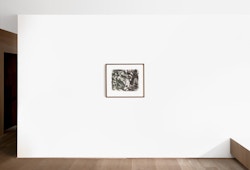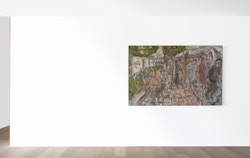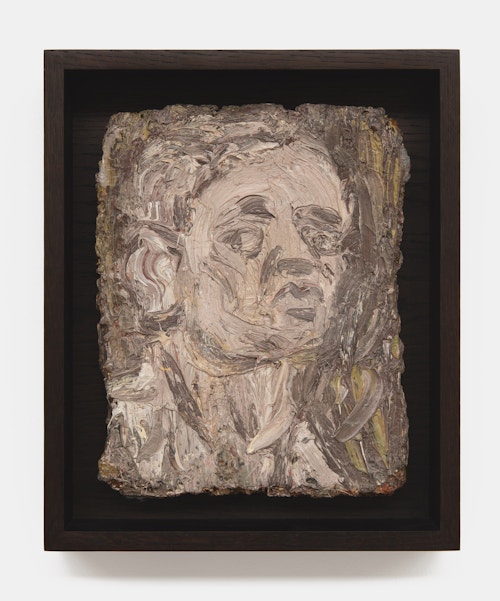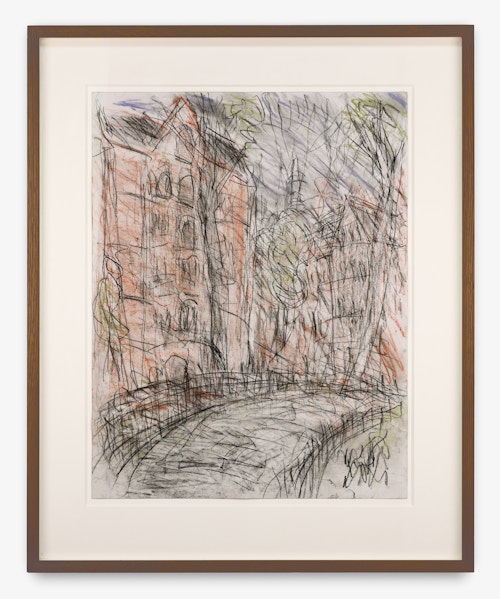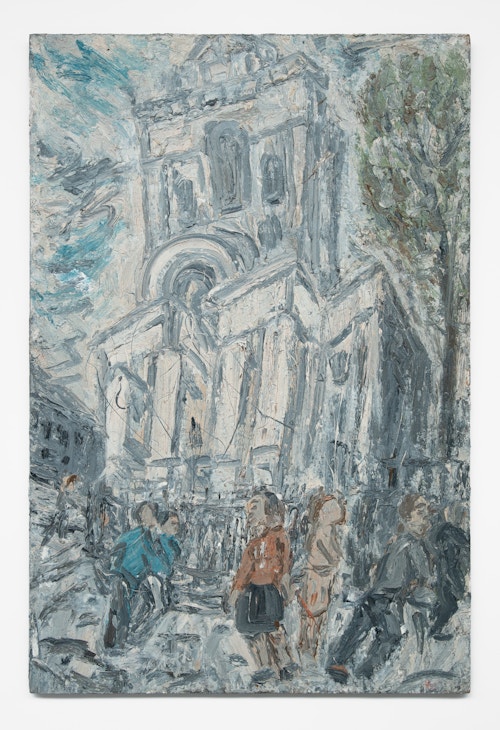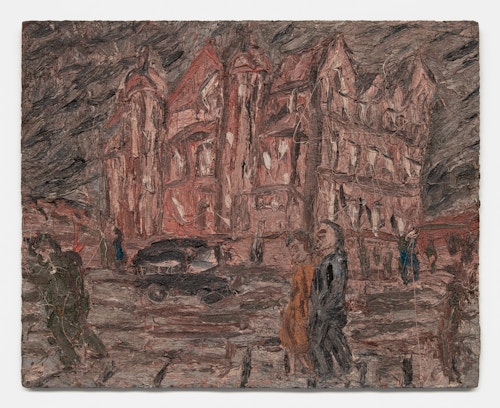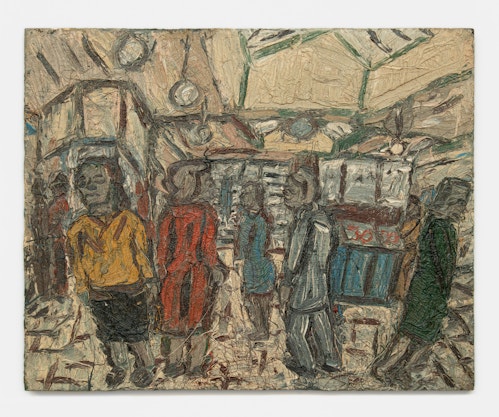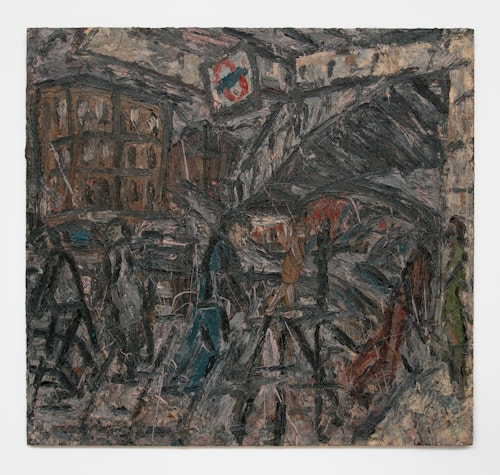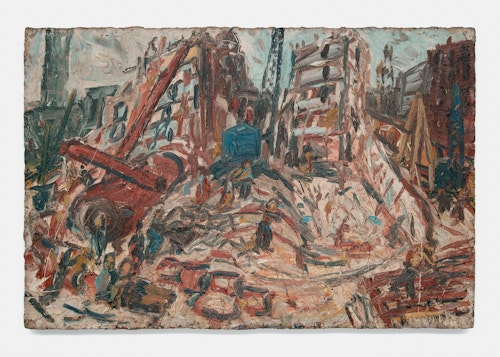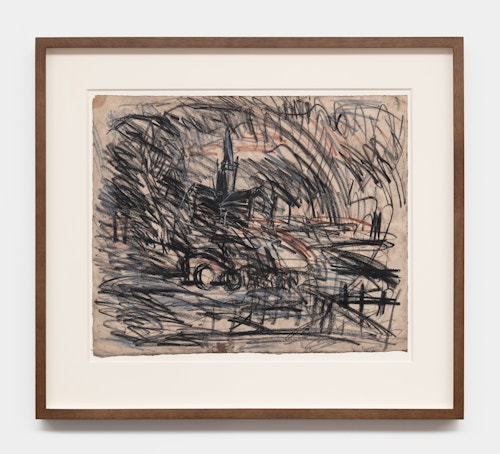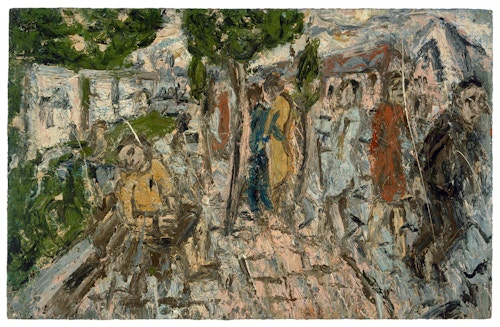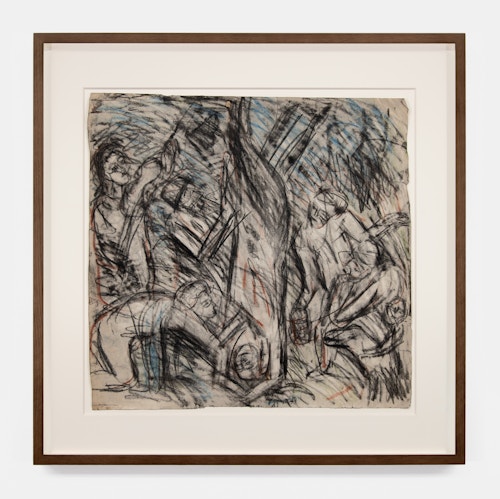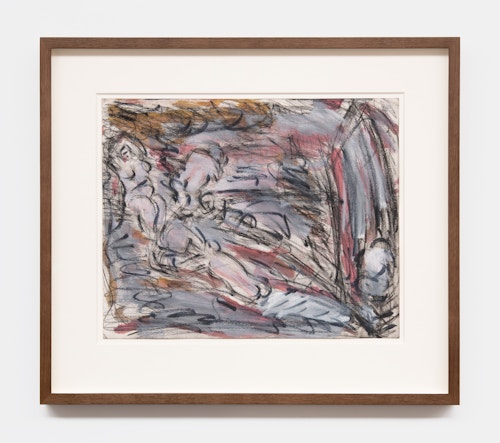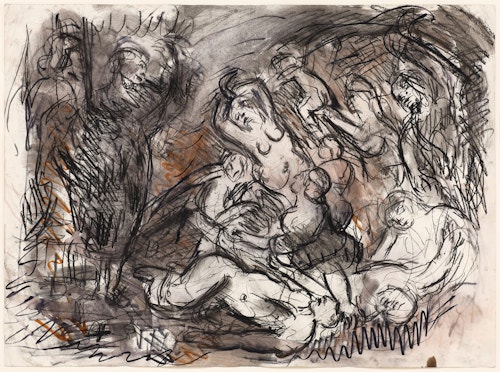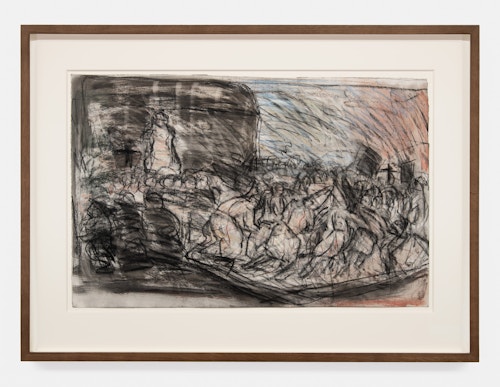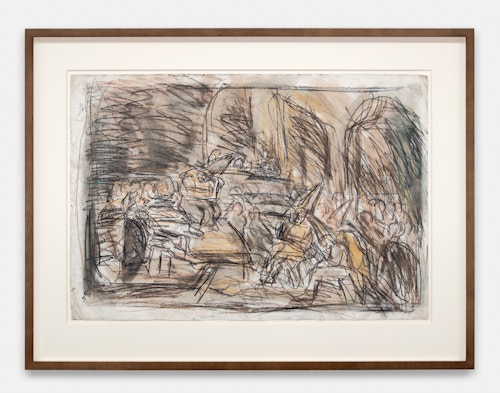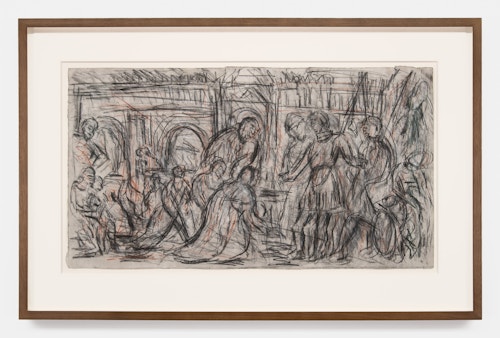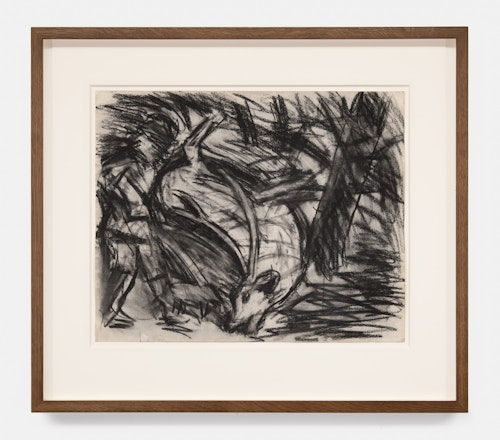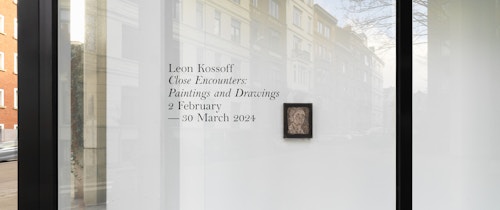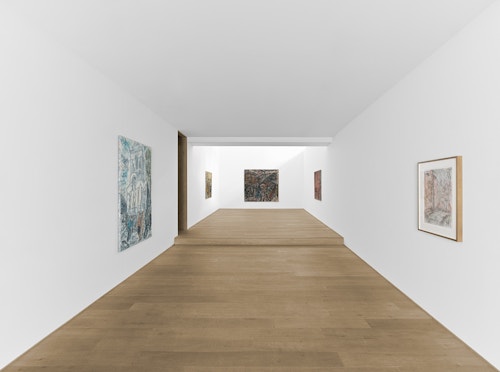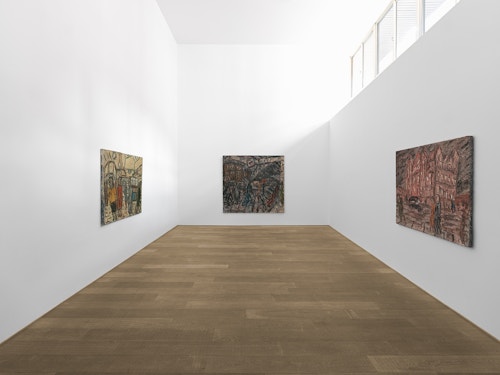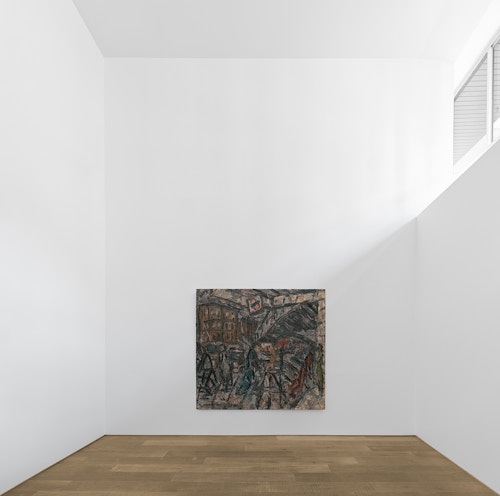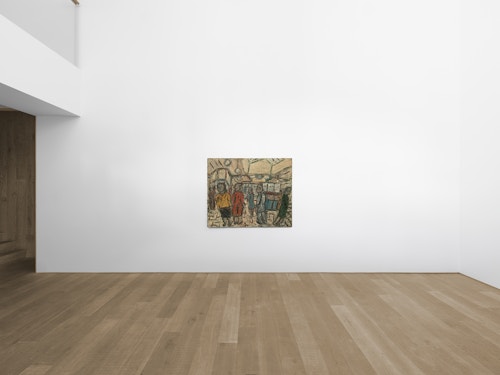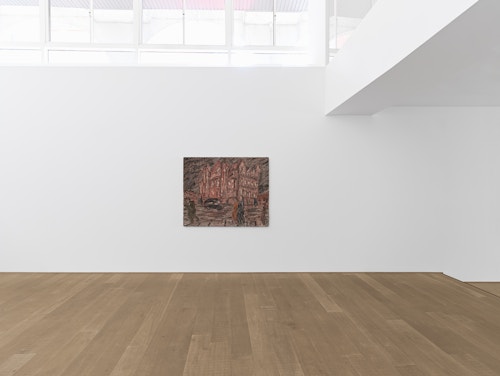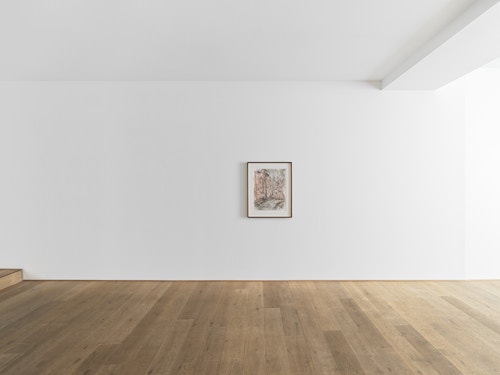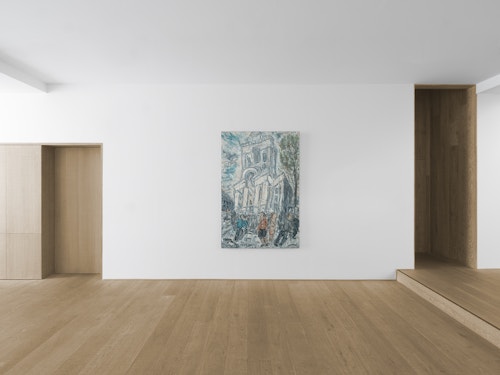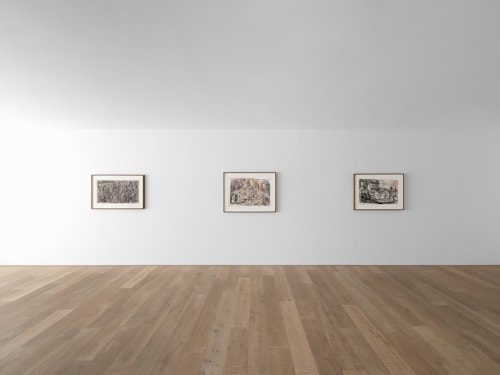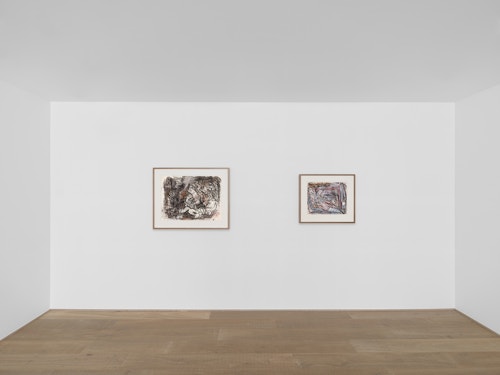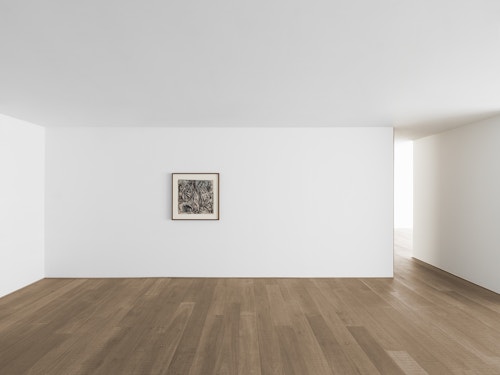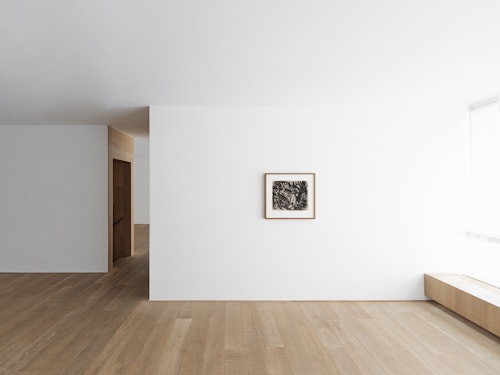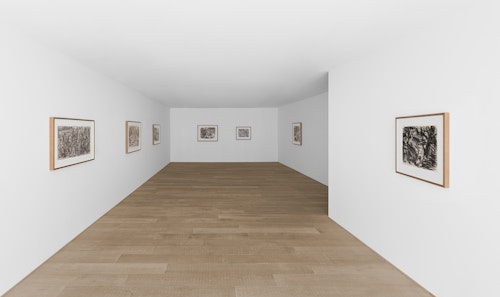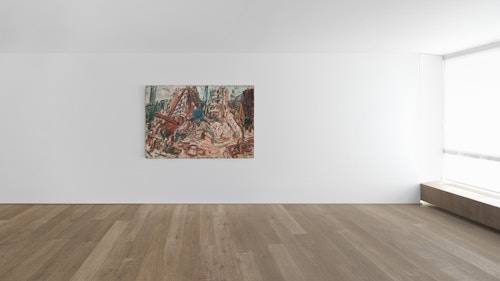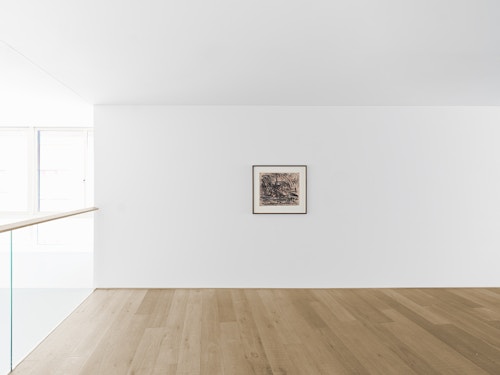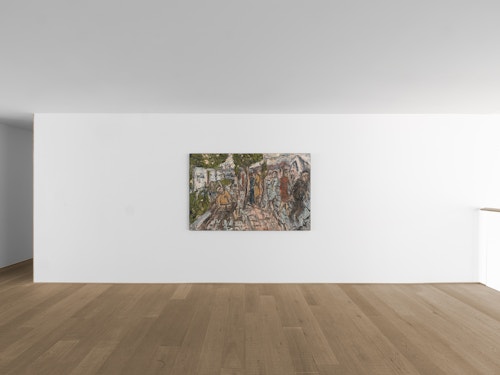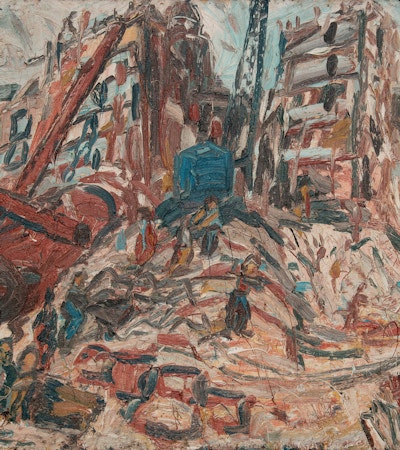
Leon Kossoff Close Encounters: Paintings and Drawings
Xavier Hufkens is pleased to announce the gallery’s first exhibition dedicated to the work of the British painter Leon Kossoff (1926-2019). Featuring paintings and drawings made over a four-decade period, the presentation highlights two significant bodies of work showcasing major themes in Kossoff’s oeuvre, namely London cityscapes and his ‘translations’ of works by Old and Modern Masters.
Leon Kossoff was a leading member of the London School, a loose association of artists that also included Francis Bacon, Lucian Freud, Frank Auerbach, and David Hockney. Although stylistically diverse, they all focused on figuration and expressive realism at a time when abstraction and minimalism were the dominant forces in contemporary art. Kossoff painted London almost obsessively. The works in the exhibition include scenes from the north of the city, where he lived and worked, and the East End, where he was raised. Painted between 1971 and 1992, they chronicle Kossoff’s fascination with the city’s post-war renewal. He was especially drawn to places of transformation and transit, such building sites and stations, as evidenced by Demolition of YMCA Building No. 2, Spring (1971), Booking Hall, Kilburn Underground Station No. 4 (1978) and Outside Kilburn Underground Station, November (1984). Separated by a period of six years, the Kilburn paintings not only bear witness to the artist’s unwavering interest in his everyday surroundings but also the way in which even the most familiar subjects are in a state of permanent flux.
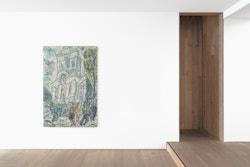
The artist additionally depicted buildings and places that evoked specific memories for him, such as Red Brick School Building, Winter (1982). This was a type of school building familiar to many English children growing up in the post-war period, and which reminded him of the primary school he himself attended in Spitalfields. The nearby church, one of London’s grandest baroque edifices, designed by Nicholas Hawksmoor, was the subject of another of his paintings, Christ Church, Spitalfields, Early Summer (1992). For Kossoff, these subjects were not just physical landmarks but ones in which there is a constant interplay between past and present, underscored by the charged and ever-moving brushwork. Kossoff painted London all year round and always from life. Light and the weather determine the atmosphere of his works, together with his gestural technique and characteristic use of impasto. In an oeuvre that chronicles the ebb and flow of life in one of the world’s largest metropolises over the best part of a century, time and memory are important touchstones. While many of the locations that Kossoff painted have long since vanished, the places immortalised in the paintings on exhibition — the Red Brick School Building, (Willesden), Christ Church, Spitalfields, and Kilburn Underground station — can all be seen today.
Leon Kossoff is also renowned for his ‘translations’ of paintings by Old and Modern Masters. While he visited and drew in the National Gallery in London on a weekly basis, and had done from a young age, the drawings in this exhibition were mainly made from works shown in Royal Academy exhibitions: Francisco Goya’s paintings and Courbet’s The German Huntsman were included in the retrospectives dedicated to these artists in 1978 and 1994 respectively, while Titian’s The Flaying of Marsyas (c. 1570-1576) was exhibited in Venetian Painting in 1983. Here too, Kossoff worked from life: he made his drawings in the galleries before the actual paintings. Yet these are anything but academic copies. Kossoff’s rapid, dynamic technique and repetitive strokes are unmistakably his own and the sketches, whilst faithful to the originals, are never identical to them. Hence the term ‘translation’. Captivated by certain Old Masters, or canvases by pioneers such as Cézanne and Courbet, Kossoff strove to analyse the psychological and emotional impact of the paintings by recreating it in his own work. It was both an intellectual engagement and an educational exercise. He wrote in 1987: “In my work done in the National Gallery, and elsewhere from the works of others, I have always been a student. From the earliest days…my attitude to these works has always been to teach myself to draw from them, and, by repeated visits, to try to understand why certain pictures have a transforming effect on the mind.” Kossoff was particularly drawn to dramatic and intense works, or those depicting a struggle, as can be seen in the exhibition.
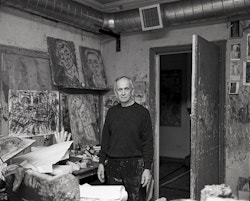
Leon Kossoff began his artistic training at St. Martin’s School of Art in 1943 but left in 1945 to complete three years of military service. He returned to St. Martin’s in 1949 and followed David Bomberg’s classes at Borough Polytechnic from 1950 to 1952. He then completed his training at the Royal College of Art between 1953 and 1956. Kossoff represented Britain at the Venice Biennale in 1995 and was the subject of a retrospective at the Tate Gallery in 1996. His work is held in major public and private collections around the world, including the Art Institute of Chicago, the J. Paul Getty Museum, Los Angeles, Metropolitan Museum of Modern Art, New York, and the Tate Gallery, London.
